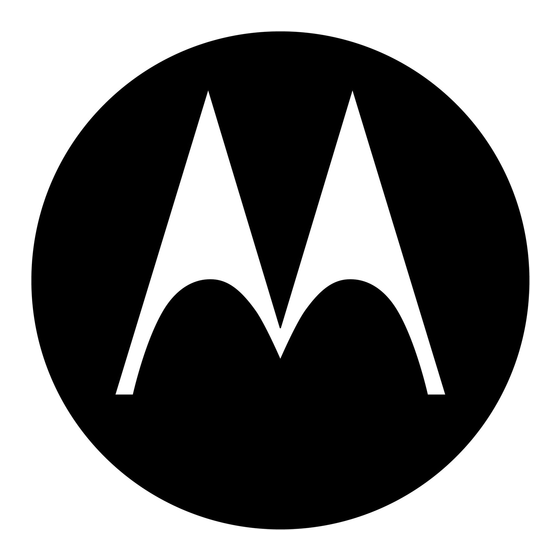Motorola ASTRO Digital XTS 3000 Manuale di servizio di base - Pagina 37
Sfoglia online o scarica il pdf Manuale di servizio di base per Radio portatile Motorola ASTRO Digital XTS 3000. Motorola ASTRO Digital XTS 3000 48. Handheld radio
Anche per Motorola ASTRO Digital XTS 3000: Manuale dell'operatore (12 pagine)

Basic Theory of
Operation
General
Overview
Analog Mode
of Operation
The ASTRO Digital XTS 3000 radio is a wideband, synthesized, fixed-tuned
radio available in the 800MHz band. All ASTRO Digital XTS 3000 radios are
capable of both analog operation and ASTRO mode (digital) operation in
12.5kHz or 25kHz bandwidths.
The ASTRO Digital XTS 3000 radio includes the following major assemblies:
• Controller Board - contains the microcontrol unit (MCU) and its
associated memory and memory management integrated circuit (IC), the
audio power amplifier, and a switching regulator.
• RF Board - contains all transmit, receive, and frequency generation
circuitry including the digital receiver back-end IC and the reference
oscillator.
• Vocoder Board - contains the digital signal processor (DSP) and its support
IC and associated memories.
• Controls/Universal Flex - contains volume/on/off switch, frequency
selector switch, push-to-talk (PTT) switch, monitor button, several
function-selectable switches, universal connector, speaker, and
microphone.
• Display (Full-Featured Model Only) - a four-line, 12-character liquid
crystal display (LCD).
• Keypad (Full-Featured Model Only) - a 3 x 6 keypad.
When the radio is receiving, the signal comes from the antenna connector to
the RF board, passes through the RX/TX switch and the receiver front end. The
signal is then filtered, amplified, and mixed with the first local-oscillator signal
generated by the voltage-controlled oscillator (VCO).
The resulting intermediate frequency (IF) signal is fed to the IF circuitry, where
it is again filtered and amplified. This amplified signal is passed to the digital
back-end IC, where it is mixed with the second local oscillator to create the
second IF at 450kHz. It is then converted to a digital bit stream and mixed a
third time to produce a baseband signal. This signal is passed to the vocoder
board through a current-driven differential output.
On the vocoder board, the digital- signal-processor-support IC digitally filters
and discriminates the signal, and passes it to the digital-signal processor (DSP).
The DSP decodes the information in the signal and identifies the appropriate
destination for it. For a voice signal, the DSP will route the digital voice data
to the DSP-support IC for conversion to an analog signal. The DSP-support IC
will then present the signal to the audio power amplifier, which drives the
speaker. For signalling information, the DSP will decode the message and pass
it to the microcontrol unit.
7
27
